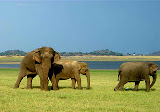
Read Before you START TRAVELING
Vehicle:
You may be planning to drive your own vehicle or maybe a hired one, yet make sure the vehicle is mechanically sound.
Get the vehicle thoroughly inspected by your mechanic.
Replace all the worn-out parts.
Pack all the spares required in any emergency and the tool kit.
Make sure the spare wheel is on standby.
Make sure that you load only things that you absolutely need.
Check all revenue license and insurance of the vehicle.
You an use the Motor Guide published by us for assistance at any emergency.
When to Start
Calculate the time backwards from the final destination
Add supplementary time for visiting the places on your way
Confirm the time with the place where you are going to stay at the final destination.(Road maps and the distance chart will help you to do these estimates).
Preparation
Food and Water are very important and you will not get them everywhere the way you want; it’s better to prepare at least one meal as you could get stranded somewhere or held up by a breakdown or what ever.
Meals must essentially be prepared when you are travelling with kids.
Always carry some confectionary items and water.
Get everybody involved in pre-trip planning, especially as kids will get a good exposure in this.
Plan the accommodation; if you are looking for budget accommodations it’s always advisable to carry your sleeping needs.
Take a good country map in order to have a closer overview of the country.
Take sufficient money for the entire journey. We also have provided information of ATMs on the
Road Maps.
Do not rely on your credit cards alone.
Compartmentalise your goods and pack your vehicle in such a way that you could easily access contents. For instance, Food, clothes, medicine, emergency needs, tools, spares, on the journey needs, etc.
Keep informed a reliable person where you are going and when you are planning to come back.
Enjoy the travel with the travel hints and information !!
First Aid
(Take an umbrella and a torch always in your vehicle.)
Information for travellers
Voltage 230-240 volts 50 cycles A.C.
Holidays
In addition to Saturday and Sunday, the full moon day (Poya Day) of each month is a holiday. Other days of religious significance are also declared holidays in Sri Lanka. Most places of entertainment are closed on Poya days and holidays.
Tourist Police
A fully fledged Tourist Police force has been established at The Sri Lanka Tourism Development Authority (SLTDA) premises at No. 80, Galle road, Colombo 03. (Tel.: +94 112 437059 / 60 ) This unit ensures that both local and foreign tourists have a safe, pleasurable and memorable travel experience in Sri Lanka without being subjected to any harassment, fraud, theft or other inconvenience.
Tourist Police Division - Tel.: 0112-421451
- Emergency services: 1912
The following units are supervised by the local Police Stations.
Police Division Police Station Tele: No Police Post
Anuradhaura Anuradhapura 025-2224546 Rest House
Beruwala Moragolla 034 227 6049
Galle Galle 060-2905981 Fort
Kalutara Aluthgama 034-2276049 Moragalla
Kandy Kandy 081-2222222 -
Negombo Negombo 031-2275555 Eththukala
Katunayake 011-2251475 Air Port
Polonnaruwa Polonnaruwa 027-2223099 Kaduruwela
Flight Information
Sri Lanka Air Lines 019 733 2677
All Air Lines 019 733 2377
Katunayeka - Bandaranayeka Airport 011 225 2861-5
Online flight booking - Sri Lankan Air - http://wwi.srilankan.aero
Health and Safety
Most of the tourist hotels are equipped to cope with emergency treatment. There are government hospitals throughout the country in almost all the cities. some hospitals are base hospitals, and some are district hospitals which are well equipped. Other than the government hospitals there are many private hospitals in many cities.
Guide Services
Trained Registered Guide Lecturers carry identity cards issued by the Ceylon Tourist board. They could be hired thought the Travel Information Centre. Tel: +94 11 234 7059, or Approved Travel Agents.
For more information you can contact:
The President National Tourist Guide Lecturers Association of Sri Lanka 37/35 Temple Road.Colombo 10. on 011 268 1214.
All guides are proficient in English. Most of the guides speak other languages such as French, German, Japanese, Italian, Russian, and Spanish. Fees are charged for their services.
Entry Fees/Photographic Permits may be charged to visit or photograph Archaeological Sites,
Fee varies from US$ 8 – 15
Tickets are available at the following places:
Central Cultural Fund - 212/1 Bauddhaloka Mawatha, Colombo 7.
Tel : 250 0732, 258 7912 (08.30 hrs to 16.15 hours).
Cultural Triangle sites. Entrance tickets to individual sites are available only at each specific site. These tickets cover charges for photography, recording and parking. Half rates are for children under 12 years.
Rates are quoted in U.S. Dollars and Rupee parities are subject to fluctuation.
Travel Information
Sri Lanka Tourist Board
Head Office: 011 243 7055, 011 243 7059-60
Sri Lanka Tourism Information Center at the Bandaranaike International Airport, Katunayake 011 225 2411
Kandy Office: 081 222 2661
Anuradhapura Ofice: 025 222 4546
Read More!






































































